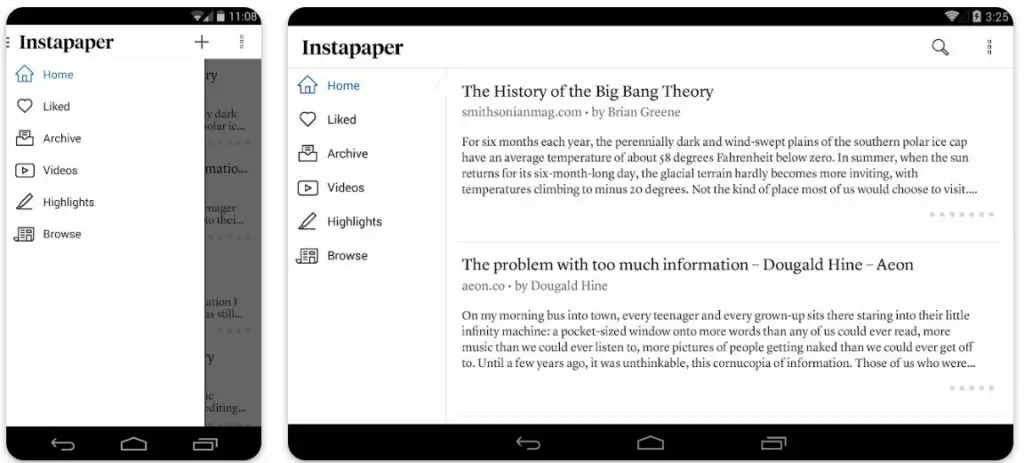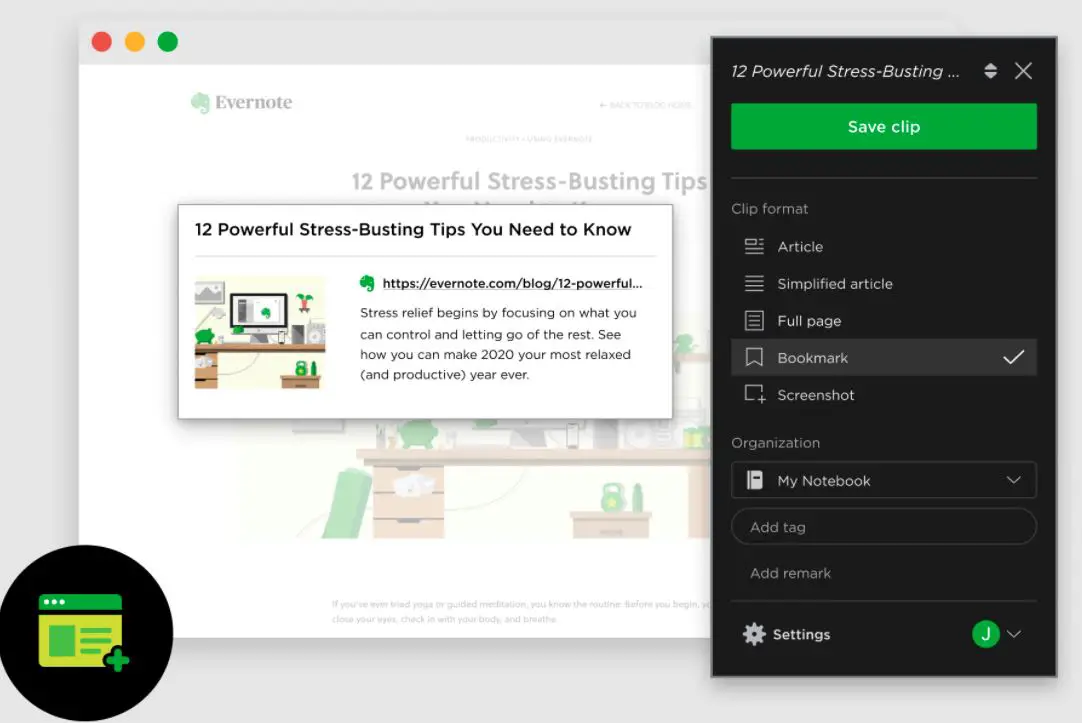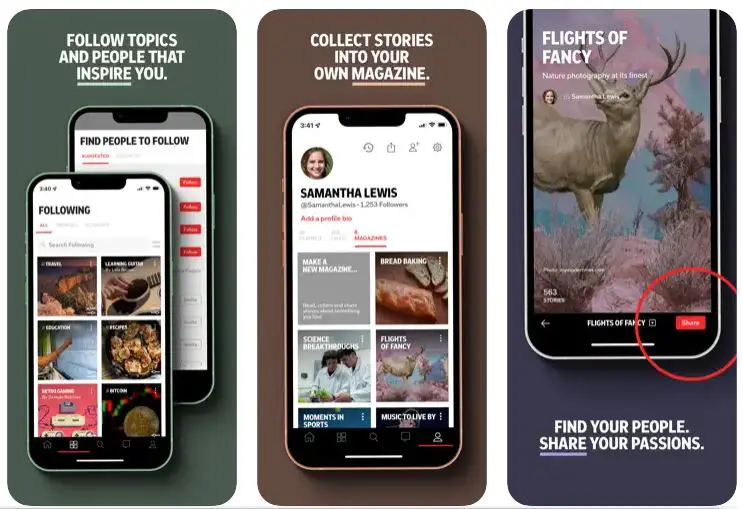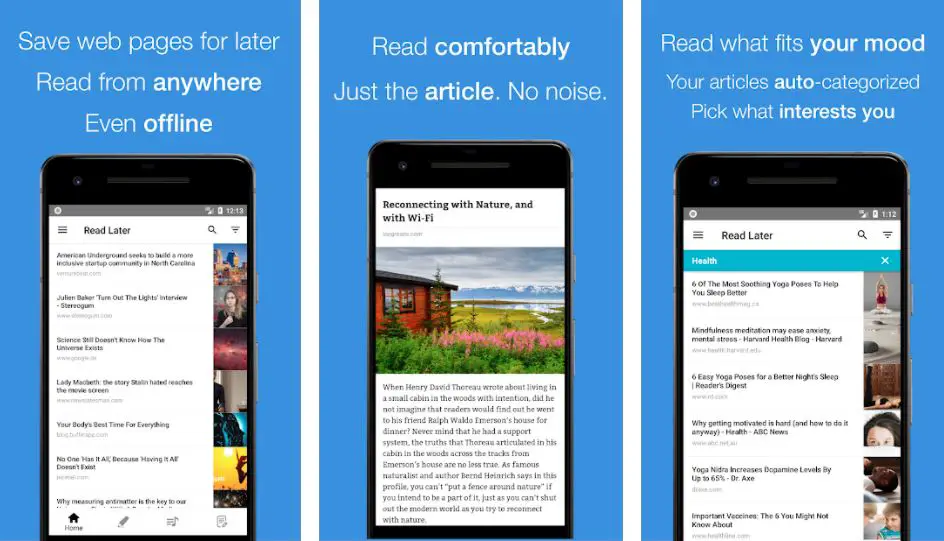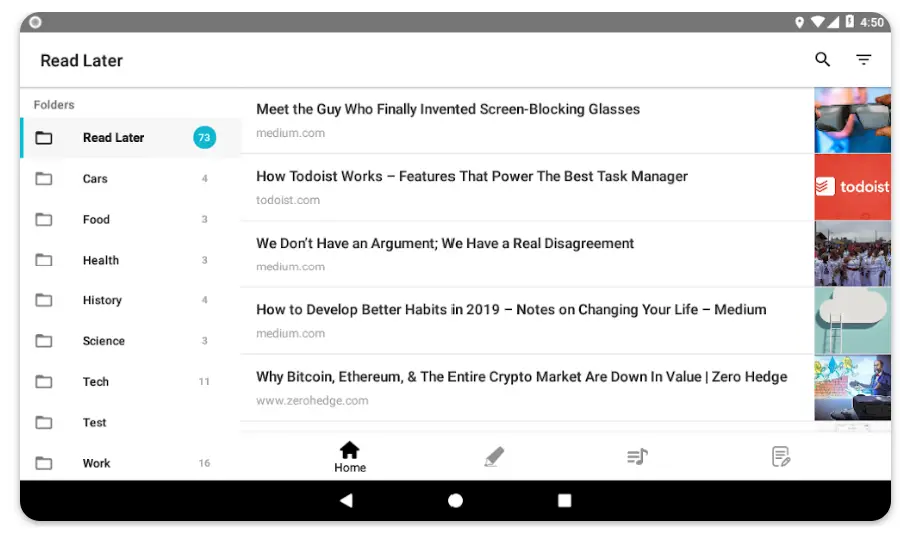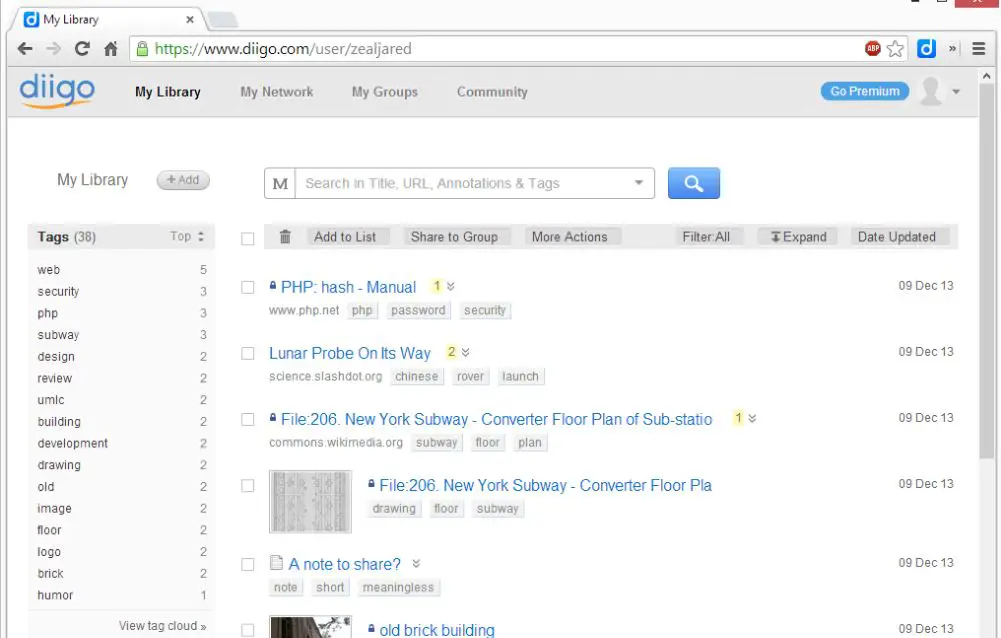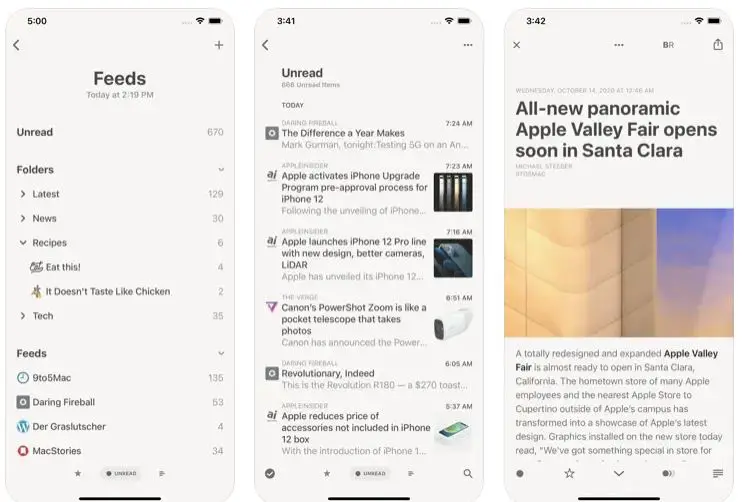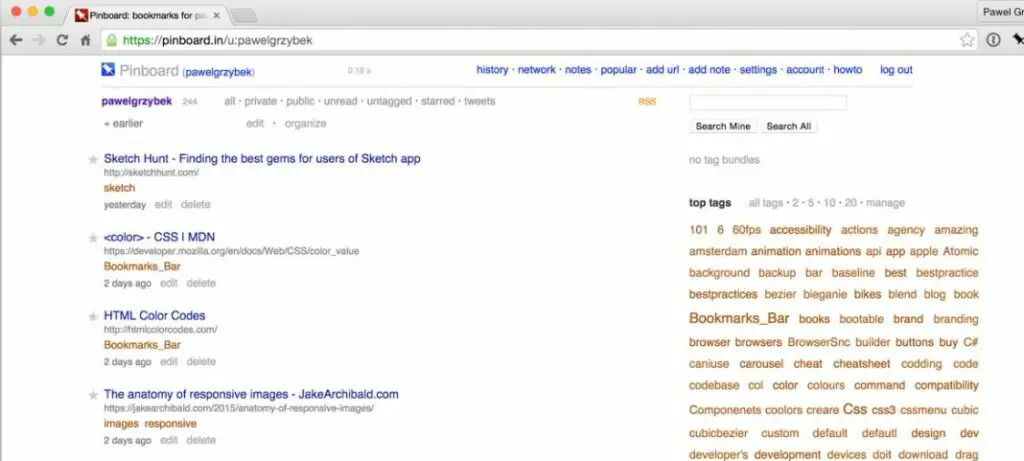As a digital native, you’ve probably drowned in an ocean of fascinating articles, compelling blogs, engaging videos, and captivating podcasts. It’s an endless stream of content, and you don’t always have the time to consume it all at once.
Enter Pocket, the life-saving bookmarking tool that stores and organizes your must-reads for later. It’s a great tool, but it’s not for everyone. Maybe the lack of certain features, the interface, or the pricing doesn’t sit well with you.
So, you’re here because you’re in the market for something different, something more aligned with your needs: pocket alternatives.
Let’s dig a little deeper into the problem. You need a convenient way to store online content for later, but with Pocket, you’ve been hitting roadblocks. The lack of advanced organization tools may leave your saved items in a disordered heap.
Perhaps you’re bothered by the lack of customization options or feel that the premium price doesn’t match the features offered. The frustration is mounting as you struggle to find a solution that ticks all your boxes.
That’s where we come in. This article will explore the best pocket alternatives available in the digital space. We’ve taken the time to carefully examine and compare different tools based on usability, functionality, and cost, among other factors.
We aim to help you discover a bookmarking tool that meets your needs and improves your content consumption experience. Read on, and let’s find your perfect Pocket replacement together.
Understanding Pocket: Strengths and Limitations
In the digital age, Pocket has become a powerful tool for curating and organizing online content. This article aims to delve into the strengths and limitations of this innovative platform.
One of the key strengths of Pocket lies in its seamless integration across devices and platforms. Whether using a smartphone, tablet, or desktop computer, Pocket ensures that your saved articles, videos, and webpages are accessible at your fingertips.
Its intuitive interface and synchronization capabilities make it a reliable companion for knowledge enthusiasts on the go.
Furthermore, Pocket’s tagging feature allows users to categorize their saved content precisely and efficiently. Individuals can create personalized libraries by assigning relevant tags, enabling easy information retrieval based on specific interests or research topics.
However, despite its myriad benefits, Pocket does have its limitations. One such limitation is the lack of collaborative features. Unlike other content curation tools, Pocket does not offer robust sharing or collaborative functionalities. This can pose challenges for teams or individuals who rely on collaborative workflows or wish to share curated content with others seamlessly.
Additionally, while Pocket excels in organizing text-based content, its support for multimedia elements is somewhat limited. Although videos and images can be saved, the platform’s focus on textual content overshadows the multimedia experience.
In conclusion, Understanding Pocket: Strengths and Limitations sheds light on this popular content curation tool’s remarkable strengths and inherent limitations.
By recognizing its strengths in cross-platform accessibility and intuitive organization while being aware of its limitations in collaborative features and multimedia support, users can make the most of Pocket’s capabilities in their quest for knowledge organization and management.
Evaluating Criteria for Pocket Alternatives
When searching for Pocket alternatives, assessing and evaluating various criteria is crucial to ensure the chosen platform meets your needs. This article provides an insightful guide to help you navigate the process of selecting the ideal alternative.
First and foremost, consider the cross-platform compatibility of the alternative. Seamless integration across multiple devices, including smartphones, tablets, and desktops, is paramount in today’s interconnected world. Look for alternatives with synchronization capabilities and user-friendly interfaces to guarantee a smooth user experience.
Next, organizational features should be carefully examined. Can the alternative efficiently categorize and tag your saved content? A robust tagging system can significantly enhance your ability to locate and retrieve information effortlessly.
Additionally, evaluate if the alternative offers advanced organization options such as folders, collections, or nested structures for better content management.
Thirdly, collaborative functionalities may be important, especially for teams or individuals collaborating on research projects or sharing knowledge. Seek alternatives that enable easy content sharing, collaboration on saved items, and the ability to comment or annotate shared content.
Another aspect to consider is content format support. While text-based content is typically the primary focus, alternatives that handle various media types, such as images, videos, or audio, can broaden your content curation possibilities.
Lastly, it is essential to assess the privacy and security features of the alternative. Ensure that your data is encrypted, protected from unauthorized access and that the platform follows strict privacy policies to safeguard your information.
By thoughtfully evaluating the criteria mentioned above, you can confidently navigate the landscape of Pocket alternatives and select a platform that aligns with your content curation needs, providing a seamless and secure experience for organizing and accessing your valuable online resources.
Detailed Review of Top Pocket Alternatives
1. Instapaper
Instapaper stands out as a top contender when finding the ideal Pocket alternative. With its features and user-friendly interface, Instapaper offers a seamless content curation experience that rivals Pocket’s capabilities.
One of the key strengths of Instapaper lies in its text optimization feature. This unique functionality reformats web articles into a clean and distraction-free reading experience.
Instapaper enhances readability by removing unnecessary clutter, such as ads and sidebars, allowing users to focus on the content.
Moreover, Instapaper excels in its annotation capabilities. Users can highlight and add notes to specific sections of saved articles, providing a convenient way to capture key insights or jot down thoughts. This feature proves invaluable for researchers, students, and anyone who wishes to engage more deeply with their curated content.
Instapaper also shines in terms of organization and discovery. Its tagging system allows for efficient categorization and easy retrieval of saved articles. Instapaper’s “Browse” feature also suggests trending and popular articles, providing users with a constant stream of engaging and relevant content.
Furthermore, Instapaper offers cross-platform compatibility that rivals Pocket. Users can seamlessly access curated content across devices, whether on a smartphone, tablet, or desktop. Synchronization ensures that your saved articles are always updated, regardless of your device.
Lastly, privacy-conscious users will appreciate Instapaper’s commitment to privacy and security. With end-to-end encryption and strong privacy policies, Instapaper prioritizes protecting user data and ensures a secure content curation experience.
In conclusion, when considering Pocket alternatives, Instapaper is a strong choice. Its text optimization feature, robust annotation capabilities, efficient organization and discovery options, cross-platform compatibility, and commitment to privacy make it a compelling option for individuals seeking a powerful and reliable content curation tool.
Pros:-
Text Optimization: Instapaper’s ability to reformat web articles into a clean and distraction-free reading experience enhances readability and allows users to focus on the content.
Annotation Capabilities: Instapaper enables users to highlight and add notes to specific sections of saved articles, facilitating deeper engagement and providing a convenient way to capture key insights.
Efficient Organization and Discovery: Instapaper’s tagging system enables efficient categorization and easy retrieval of saved articles. The “Browse” feature suggests trending and popular articles, ensuring a constant stream of engaging and relevant content.
Cross-Platform Compatibility: Users can seamlessly access curated content across devices, including smartphones, tablets, and desktop computers. Synchronization ensures that saved articles are always updated, regardless of the device used.
Privacy and Security: Instapaper prioritizes user data protection with end-to-end encryption and strong privacy policies, ensuring a secure content curation experience.
Cons:-
Limited Multimedia Support: Instapaper’s focus is primarily on text-based content, which means its support for multimedia elements such as images, videos, or audio is more limited than other alternatives.
Collaborative Features: Instapaper lacks robust collaborative functionalities, making it less suitable for teams or individuals who rely on collaborative workflows or wish to share curated content seamlessly.
Limited Offline Access: While Instapaper offers offline access to saved articles, the extent of offline functionality may be more limited compared to other alternatives, which could affect users in areas with limited or no internet connectivity.
Paid Subscription Model: Instapaper operates on a paid subscription model, which may deter some users who prefer free alternatives or have budget constraints. However, the subscription fee provides access to premium features and supports ongoing development and improvements.
Overall, Instapaper’s strengths in text optimization, annotation capabilities, efficient organization and discovery, cross-platform compatibility, and commitment to privacy outweigh its limitations.
However, users should consider multimedia support, collaborative needs, offline access, and the subscription model to determine if Instapaper meets their requirements.
Pocket vs Instapaper:-
Pocket sets itself apart with its intuitive interface and robust cross-platform compatibility. Users can save articles, videos, and webpages seamlessly across devices, ensuring easy access to curated content on smartphones, tablets, and desktop computers.
Pocket’s focus on a clutter-free reading experience and its powerful tagging system contribute to efficiently organizing and retrieving saved content. However, one limitation of Pocket is its limited support for multimedia elements, which may impact users seeking a more multimedia-centric content curation experience.
On the other hand, Instapaper shines in its text optimization feature, transforming web articles into distraction-free reading experiences. This functionality and Instapaper’s strong annotation capabilities empower users to engage deeply with their curated content.
Instapaper also offers efficient organization through its tagging system and provides a “Browse” feature that suggests popular and trending articles, fostering serendipitous discovery.
While Instapaper excels in text-based content, its support for multimedia elements is relatively limited, which might be a drawback for users seeking a more diverse media curation experience.
Regarding collaboration, Pocket surpasses Instapaper with its robust sharing and collaborative functionalities. Pocket allows users to share curated content with others and collaborate on saved items, enhancing teamwork and knowledge sharing. Instapaper, however, lags in this aspect, lacking comprehensive, collaborative features.
Regarding pricing, both platforms offer free versions with limited features. Pocket offers a premium subscription with additional features, while Instapaper operates solely on a paid subscription model. The choice between free or paid models depends on individual preferences and budget considerations.
In summary, Pocket and Instapaper cater to different preferences and needs. Pocket excels in cross-platform compatibility, collaborative features, and clutter-free reading, while Instapaper shines in text optimization, annotation capabilities, and serendipitous content discovery.
Users should assess their priorities, such as multimedia support, collaboration requirements, and pricing preferences, to determine which platform best aligns with their specific content curation needs.
Here’s a detailed comparison table of Pocket and Instapaper:-
| Feature | Instapaper | |
|---|---|---|
| Pricing | Free, premium option available ($4.99/mo) | Free, premium option available ($2.99/mo) |
| Platforms supported | iOS, Android, Web, macOS, Windows | iOS, Android, Web, macOS |
| Save content | Web pages, articles, videos, images | Web pages, articles, videos, images |
| Reading experience | Text-to-speech, dark mode, custom fonts | Text-to-speech, dark mode, custom fonts |
| Organization | Tags, lists, favorites, archive | Folders, highlights, liked articles, archive |
| Sharing | Share via email, social media, messaging | Share via email, social media, messaging |
| Offline access | Yes | Yes |
| Search | Yes | Yes |
| Integration with other apps | Yes | Limited |
| Privacy | SSL encryption, no third-party tracking | SSL encryption, no third-party tracking |
Download the App from Google Play Store
Download the App from Apple App Store
2. Raindrop.io
Regarding content curation, Raindrop.io emerges as a powerful Pocket alternative that offers a wealth of features for organizing your online world. Raindrop.io provides users with a seamless and efficient content curation experience with its sleek interface and robust functionalities.
One of the key strengths of Raindrop.io lies in its versatile organization options. Users can create customizable collections, folders, and tags to categorize and structure their curated content.
This allows for precise organization and easy retrieval based on specific interests or research topics. The flexibility of Raindrop.io’s organization system sets it apart from other alternatives.
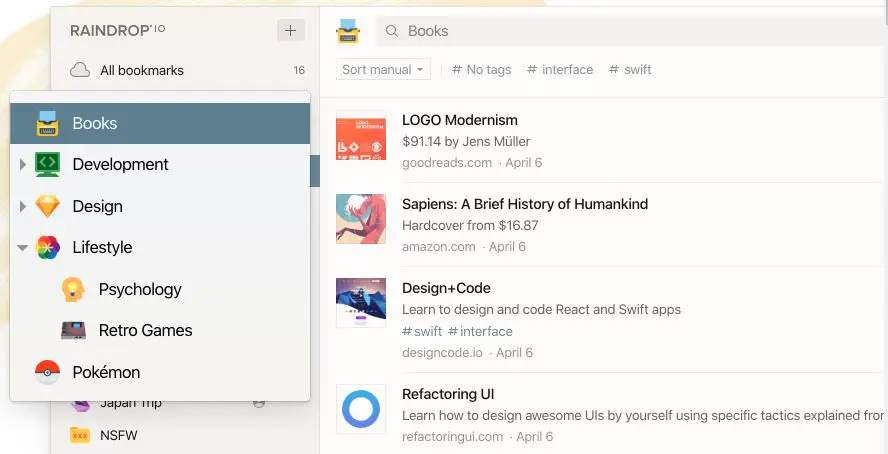
Additionally, Raindrop.io excels in cross-platform compatibility. Whether on a smartphone, tablet, or desktop computer, Raindrop.io ensures that your curated content is accessible anytime, anywhere.
Its synchronization capabilities keep your bookmarks and saved items up to date across all your devices, enabling a seamless content curation experience on the go.
Another noteworthy feature of Raindrop.io is its rich media support. While text-based content is essential, Raindrop.io goes beyond by allowing users to save and organize a wide range of media types, including images, videos, articles, documents, and even code snippets. This extensive support for multimedia elements caters to diverse content curation needs.
Furthermore, Raindrop.io offers collaborative features that foster teamwork and knowledge sharing. Users can share collections or individual bookmarks with others, enabling seamless collaboration and information exchange. This makes Raindrop.io an excellent choice for teams or individuals who prioritize collaborative workflows and want to share curated content effortlessly.
In terms of privacy and security, Raindrop.io takes user data protection seriously. With robust encryption and strict privacy policies, users can trust that their curated content remains secure and private.
In conclusion, Raindrop.io is a compelling Pocket alternative for individuals seeking a comprehensive content curation solution.
With its versatile organization options, cross-platform compatibility, rich media support, collaborative features, and commitment to privacy, Raindrop.io empowers users to organize their online world and access their curated content easily.
Pros:-
Versatile Organization Options: Raindrop.io offers customizable collections, folders, and tags, giving users a high degree of flexibility in organizing and structuring their curated content.
Rich Media Support: Raindrop.io supports a wide range of media types, including images, videos, articles, and documents, allowing users to curate diverse types of content in one central place.
Collaborative Features: Raindrop.io facilitates collaboration and knowledge sharing through the ability to share collections or individual bookmarks with others, making it suitable for teams or individuals working together.
Cons:-
Learning Curve: Due to its extensive features and customization options, new users may require time to familiarize themselves with Raindrop.io’s functionalities and make the most of the platform.
Interface Complexity: Raindrop.io’s interface may appear more complex than simpler alternatives, particularly when navigating the various organization options and customization features.
Limited Free Plan: While Raindrop.io offers a free plan, it has certain limitations, such as a restricted number of bookmarks and limited access to advanced features. Upgrading to a paid plan is necessary for full access to all functionalities.
Pocket vs Raindrop.io:-
Raindrop.io offers a more robust organizational framework. Users can precisely structure and categorize their curated content with customizable collections, folders, and tags.
Raindrop.io supports various media types, including images, videos, articles, and documents, providing a versatile content curation experience. While Raindrop.io may have a steeper learning curve due to its extensive customization options, its rich feature set appeals to users who prioritize organization and diverse media support.
Regarding collaboration, Raindrop.io shines with its collaborative features, allowing users to share collections or individual bookmarks with others. This makes Raindrop.io a favorable choice for teams or individuals who require seamless knowledge sharing. In contrast, Pocket’s collaborative functionalities are more limited.
Privacy and security are crucial considerations. Pocket and Raindrop.io prioritize user data protection, but Raindrop.io offers greater control over privacy settings, ensuring users can tailor their content visibility to their preferences.
Regarding pricing, both Pocket and Raindrop.io offer free versions with limitations, while premium subscriptions unlock additional features. Users should consider their budget and the specific features they require when evaluating the cost-value proposition of each platform.
In conclusion, choosing between Pocket and Raindrop.io depends on individual preferences and needs. Pocket excels in simplicity, cross-platform compatibility, and a clutter-free reading experience.
On the other hand, Raindrop.io offers robust organizational capabilities, diverse media support, and collaborative features. By carefully assessing these factors, users can determine which platform aligns best with their content curation requirements.
Here’s a detailed comparison table between Pocket and Raindrop:-
| Features | Raindrop | |
|---|---|---|
| Bookmarking | Yes | Yes |
| Web Browser Support | Chrome, Firefox, Safari, Edge | Chrome, Firefox, Safari, Opera |
| Mobile App Support | iOS, Android | iOS, Android |
| Tags | Yes | Yes |
| Collections/Folders | Yes | Yes |
| Highlighting | Yes | No |
| Annotation | Yes (Premium) | Yes (Premium) |
| Collaboration | Yes (Premium) | No |
| Search | Yes | Yes |
| Social Media Sharing | Yes | Yes |
| Importing/Exporting | Yes | Yes |
| Pricing | Free with Premium option | Free with Premium option |
Download the App from Google Play Store
Download the App from Apple App Store
3. Evernote
When capturing and organizing important information, Evernote emerges as a powerful alternative to Pocket. With its robust features and versatility, Evernote offers users a comprehensive platform to remember and manage everything essential.
One of the key strengths of Evernote lies in its ability to capture and store diverse types of content. Whether it’s text notes, images, web articles, PDFs, or voice recordings, Evernote allows users to save and organize a wide range of information in one central location.
This versatility makes it ideal for individuals who must curate and remember various important content types.
Moreover, Evernote excels in its note-taking capabilities. The platform provides a rich set of formatting options, allowing users to create well-structured and organized notes.
Users can add tags, create notebooks, and utilize hierarchical structures to enhance the organization and retrieval of their saved content.
Another standout feature of Evernote is its powerful search functionality. With Evernote’s advanced search capabilities, users can effortlessly find specific notes or information within their vast collection. Searching for text within images and PDFs further enhances the accessibility and retrieval of important content.
Furthermore, Evernote’s cross-platform compatibility ensures seamless access to curated content across devices, including smartphones, tablets, and desktop computers. Synchronization keeps notes and files current, allowing users to access important information anytime.
Additionally, Evernote offers collaborative features that enable users to share notes and collaborate on projects. This makes it a valuable tool for teams and individuals who need to collaborate, brainstorm, and share information seamlessly.
In terms of data security and privacy, Evernote prioritizes protecting user information. With features like encryption, two-step verification, and strict privacy policies, Evernote ensures that your important data remains secure.
In conclusion, Evernote proves to be a powerful Pocket alternative for individuals seeking a comprehensive platform to remember and organize everything important.
Its versatility in capturing diverse content types, robust note-taking capabilities, powerful search functionality, cross-platform compatibility, collaborative features, and commitment to data security make it an excellent choice for individuals and teams alike.
With Evernote, you can have confidence in effectively remembering and managing all your important information.
Pros:-
Versatile Content Storage: Evernote allows users to capture and store diverse types of content, including text notes, images, web articles, PDFs, and voice recordings, providing a comprehensive platform for organizing important information.
Robust Note-Taking Capabilities: Evernote offers a rich set of formatting options, allowing users to create well-structured and organized notes. Users can add tags, create notebooks, and utilize hierarchical structures to enhance the organization and retrieval of saved content.
Powerful Search Functionality: Evernote’s advanced search capabilities enable users to find specific notes or information within their extensive collection effortlessly. The ability to search for text within images and PDFs further enhances accessibility and retrieval.
Cross-Platform Compatibility: Evernote ensures seamless access to curated content across multiple devices, including smartphones, tablets, and desktop computers. Synchronization keeps notes and files current, allowing users to access information anytime.
Collaborative Features: Evernote enables users to share notes and collaborate on projects, making it a valuable tool for teamwork, brainstorming, and seamless information sharing.
Cons:-
Learning Curve: Evernote’s extensive feature set may have a slight learning curve for new users who need time to familiarize themselves with all functionalities and make the most of the platform.
Limited Free Plan: While Evernote offers a free plan, it has limitations, such as restricted storage and access to advanced features. Upgrading to a paid plan is necessary for full access to all functionalities.
Interface Complexity: Some users may find Evernote’s interface slightly complex, particularly when navigating the various organization options and customization features.
Multimedia Limitations: While Evernote supports various content types, including images and audio, its multimedia capabilities are not as extensive as other platforms, which may be a drawback for users seeking a more multimedia-centric content organization.
In summary, Evernote as a Pocket alternative offers versatile content storage, robust note-taking capabilities, powerful search functionality, cross-platform compatibility, and collaborative features.
However, users should consider the learning curve, limited free plan, interface complexity, and multimedia limitations when evaluating if Evernote aligns with their specific content organization needs.
Pocket vs Evernote:-
Evernote offers a more comprehensive approach to content organization. It allows users to capture and store diverse types of content, including text notes, images, web articles, PDFs, and more.
Evernote’s robust note-taking capabilities, such as formatting options, tags, and notebooks, enable users to create well-structured and organized notes. It excels in powerful search functionality, allowing users to find specific information within their vast collection effortlessly.
Evernote’s versatility extends to collaboration, enabling users to seamlessly share notes and collaborate on projects. However, due to its extensive feature set, Evernote may have a slight learning curve for new users.
Another distinction lies in their primary focus. Pocket is designed for bookmarking and reading later, while Evernote is a comprehensive digital workspace for capturing, organizing, and retrieving information.
In terms of pricing, both platforms offer free versions with limited features. Pocket’s premium subscription unlocks additional features, while Evernote offers tiered plans with varying storage and functionality.
Ultimately, the choice between Pocket and Evernote depends on individual preferences and needs. Pocket excels in simplicity, cross-platform compatibility, and a clutter-free reading experience.
Evernote offers versatility in content types, robust organizational capabilities, powerful search functionality, and collaborative features. Users should consider their priorities, such as the type of content they wish to curate and the level of organization required, to determine which platform best aligns with their specific needs.
Here’s a detailed comparison table between Pocket and Evernote:-
| Feature | Evernote | |
|---|---|---|
| Pricing | Free, $4.99/month, $44.99/year for Premium | Free, $7.99/month, $14.99/month, $69.99/year for Premium |
| Platforms | Web, iOS, Android, Chrome, Firefox, Safari, Opera | Web, iOS, Android, Windows, Mac, Chrome, Firefox, Safari |
| Offline Access | Yes | Yes |
| Web Clipping | Yes | Yes |
| Annotation | No | Yes |
| Tagging | Yes | Yes |
| Note Sharing | Yes, with limits | Yes, with limits |
| Integrations | 1500+ | 150+ |
| File Uploads | No | Yes |
| OCR (Optical Character Recognition) | No | Yes |
| Audio Recording | No | Yes |
Download the App from Google Play Store
Download the App from Apple App Store
4. Flipboard
If you’re searching for a captivating Pocket alternative, look no further than Flipboard. With its visually appealing interface and curated magazine-style format, Flipboard offers a unique and engaging content curation experience.
One of the standout features of Flipboard is its ability to curate content from multiple sources. Users can choose from various topics and interests to create personalized magazines.
These magazines serve as curated collections of articles, images, videos, and more, providing a visually stunning way to organize and consume content.
Flipboard’s discovery capabilities are another area where it excels. Its algorithms and personalized recommendations ensure that users are constantly exposed to new and interesting content within their chosen topics. This serendipitous discovery feature sets Flipboard apart from other alternatives.
Additionally, Flipboard offers seamless social media integration. Users can connect their social accounts and curate content from their social feeds, bringing together their favorite articles, images, and videos from platforms like Twitter, Instagram, and Facebook.
This integration enhances the content curation experience by incorporating personalized social media content.
The mobile experience on Flipboard is particularly noteworthy. The platform’s mobile app provides a smooth and intuitive interface optimized for a seamless reading experience on smartphones and tablets. Users can easily flip through pages and browse content, making it ideal for on-the-go content consumption.
However, one limitation of Flipboard as a Pocket alternative is its emphasis on visual content. While it supports text-based articles, it may not suit users who prioritize textual content organization.
In conclusion, Flipboard offers a visually captivating and personalized content curation experience, making it a strong alternative to Pocket. Its ability to curate content from multiple sources, discover new content, integrate social media, and provide a seamless mobile experience sets it apart.
Consider Flipboard if you seek a visually engaging way to curate and consume content in a magazine-style format.
Pros:-
Visually Appealing Interface: Flipboard’s magazine-style format and visually captivating interface provide an engaging and immersive content curation experience.
Curated Content from Multiple Sources: Users can curate content from various sources and topics, creating personalized magazines that showcase their interests and preferences.
Serendipitous Discovery: Flipboard’s algorithms and personalized recommendations ensure users are constantly exposed to new and interesting content within their chosen topics, fostering a sense of discovery.
Social Media Integration: Flipboard seamlessly integrates with social media platforms, allowing users to curate content from their social feeds and incorporate personalized social media content into their curated magazines.
Optimized Mobile Experience: Flipboard’s mobile app provides a smooth and intuitive interface optimized for reading on smartphones and tablets, making it ideal for on-the-go content consumption.
Cons:-
Emphasis on Visual Content: While Flipboard supports text-based articles, its emphasis on visual content may not be as suitable for users who prioritize textual content organization.
Limited Organization Options: Flipboard’s organization options are more limited than other alternatives, which may be a drawback for users who require advanced organization features or hierarchical structures.
Lack of Offline Access: Flipboard’s offline access is limited compared to some alternatives, which may be a limitation for users who frequently need to access their curated content without an internet connection.
Limited Multimedia Support: Flipboard’s support for multimedia elements such as videos, images, and audio is strong, but it may not be as extensive as some other platforms, which could affect users seeking a more diverse media curation experience.
In summary, Flipboard as a Pocket alternative offers a visually appealing interface, curated content from multiple sources, serendipitous discovery, social media integration, and an optimized mobile experience.
However, users should consider factors such as the emphasis on visual content, limited organization options, offline access limitations, and multimedia support when evaluating if Flipboard aligns with their specific content curation needs.
Pocket vs Flipboard:-
Pocket saves articles to read later and organizes your reading list. At the same time, Flipboard is more geared towards discovering and consuming news and stories in a visually appealing format.
Pocket excels in content curation and cross-platform accessibility, offering a clutter-free reading experience. Flipboard shines in content discovery, providing visually captivating curated magazines. Consider your priorities- organization, immersion, or serendipitous discovery- to determine which platform best aligns with your needs.
Here’s a table comparing Pocket and Flipboard:-
| Feature | ||
|---|---|---|
| Purpose | Save and organize articles, videos, and web pages to read later | Curate and discover content based on user interests |
| Platforms | Web, iOS, Android, Kindle Fire, Kobo, Chrome, Firefox, Safari | Web, iOS, Android |
| Price | Free, with a premium version available for $4.99/month or $44.99/year | Free |
| Saving content | Save content from web pages, apps, and social media platforms | Save articles and videos from within the app |
| Organizing content | Organize content using tags and a filterable list view | Organize content using themed magazines |
| Offline access | Available for saved content | Available for saved content |
| Social features | Share content with friends via email or social media | Follow other users, like and comment on articles |
| Recommendations | No | Yes, based on user interests and activity |
| Ads | No | Yes |
| Privacy | End-to-end encryption for saved content | May collect user data for advertising purposes |
5. PaperSpan
In content curation apps, PaperSpan emerges as a compelling alternative to Pocket. With its seamless user experience and robust features, PaperSpan provides an excellent platform for curating and capturing digital content.
At its core, PaperSpan is a powerful tool for curating articles, web pages, and documents. Its intuitive interface and streamlined design make saving and organizing online content effortless. Users can curate and capture valuable information with a single click, ensuring it is readily accessible whenever needed.
One of PaperSpan’s standout features is its ability to sync across devices. Whether using a smartphone, tablet, or computer, your curated content stays in sync, allowing seamless access and a consistent experience across different platforms.
With PaperSpan’s annotation and note-taking capabilities, users can actively engage with their saved content.
Add highlights, make annotations, and attach personalized notes to important sections, enhancing the overall curation experience. This interactive approach ensures that users can capture and remember key insights from their curated articles.
Another advantage of PaperSpan is its powerful search functionality. Users can easily find specific articles or documents within their curated collection using keywords or filters, saving time and effort when retrieving valuable information.
However, it’s important to note that PaperSpan’s multimedia support may be more limited than some alternatives. While it excels in capturing textual content, users seeking a more multimedia-rich curation experience may find other platforms more suitable.
In summary, PaperSpan is a reliable alternative to Pocket with its seamless content curation, cross-device synchronization, annotation capabilities, and powerful search functionality. Whether you’re curating articles, webpages, or documents, PaperSpan offers an intuitive and efficient platform for capturing and organizing valuable information.
Consider PaperSpan a compelling choice for those seeking a pocket app alternative combining ease of use with robust features.
Pros:-
Effortless Content Curation: PaperSpan provides a seamless and intuitive interface for easily curating and saving online articles, web pages, and documents.
Cross-Device Syncing: The ability to sync curated content across devices ensures a consistent experience and allows for convenient access to saved articles and documents from anywhere.
Annotation and Note-Taking: PaperSpan’s annotation and note-taking capabilities enhance the curation experience by allowing users to add highlights, make annotations, and attach personalized notes to important sections of curated content.
Powerful Search Functionality: PaperSpan’s robust search functionality lets users quickly locate specific articles or documents within their curated collection using keywords or filters.
Intuitive and Streamlined Design: The user-friendly interface and streamlined design of PaperSpan make it easy to navigate and use, providing a pleasant and efficient content curation experience.
Cons:-
Limited Multimedia Support: PaperSpan focuses primarily on textual content, which may result in limited support for multimedia elements like images, videos, or audio.
Organization Options: While PaperSpan offers basic organization features, users looking for more advanced organization options or hierarchical structures may find other platforms more suitable.
Collaboration Features: PaperSpan’s collaboration capabilities are relatively limited compared to other alternatives, which may be a drawback for users who require robust teamwork and knowledge-sharing functionalities.
Interface Customization: PaperSpan may have limited customization options for the interface compared to certain alternatives, which could be a limitation for users who prefer personalized visual experiences.
In summary, PaperSpan, as a Pocket app alternative, offers effortless content curation, cross-device syncing, annotation capabilities, powerful search functionality, and an intuitive design.
However, users should consider limited multimedia support, organization options, collaboration features, and interface customization when evaluating whether PaperSpan aligns with their content curation needs.
Pocket vs PaperSpan:-
Pocket may be the better option if you are primarily interested in a simple bookmarking tool focusing on reading.
If you want a more robust organizational tool that can help you manage various types of content and improve productivity, PaperSpan may be the better choice.
Here’s a detailed table comparing Pocket and PaperSpan:-
| Feature | PaperSpan | |
|---|---|---|
| Cost | Free with an optional Premium subscription | Free with an optional Premium subscription |
| Platforms | Web, Android, iOS, Chrome, Firefox, Safari | Web, Android, iOS |
| Saving Articles | Yes | Yes |
| Saving Webpages | No | Yes |
| Article Search | Yes | Yes |
| Tagging | Yes | Yes |
| Highlighting | Yes (with Premium) | Yes (with Premium) |
| Note Taking | Yes (with Premium) | Yes (with Premium) |
| Readability | Clean, easy-to-read interface | Clean, easy-to-read interface |
| User Interface | Simple and intuitive | Simple and intuitive |
Download the App from Google Play Store
Download the App from Apple App Store
6. Wallabag – Cost Effective pocket alternatives
For those seeking a cost-effective alternative to Pocket, Wallabag emerges as a compelling solution. With its budget-friendly approach and robust features, Wallabag offers a cost-conscious way to curate and save digital content.
Wallabag’s affordability is a key advantage for budget-conscious users. It offers a self-hosted option that allows individuals to host their instance of Wallabag on their preferred server, eliminating the need for expensive subscriptions or recurring fees.
This cost-saving approach makes Wallabag an attractive option for those looking to reduce their expenses while still enjoying the benefits of a content curation platform.
Despite its cost-effective nature, Wallabag doesn’t compromise on features. It provides all the essential functionalities needed for content curation, such as saving articles, web pages, and videos for later consumption. Users can capture and store valuable information in their personal Wallabag library with a single click.
Wallabag also prioritizes privacy and data ownership. By self-hosting the platform, users have full control over their data, ensuring their privacy is safeguarded. This distinguishes Wallabag as a more secure and transparent option than other alternatives.
Additionally, Wallabag offers an ad-free experience. Unlike free versions of some content curation platforms that may inundate users with ads, Wallabag allows for distraction-free reading and content organization.
While Wallabag’s self-hosting option may require technical expertise, its open-source nature encourages community-driven development and innovation. This ensures that the platform continues to evolve and improve, benefiting users in the long run.
In summary, Wallabag, as a cost-effective Pocket alternative, offers a self-hosted option, providing a budget-friendly approach to content curation.
With its ability to save articles, webpages, and videos, focus on privacy and data ownership, ad-free experience, and open-source nature, Wallabag empowers frugal users to curate and save digital content without compromising essential features.
Consider Wallabag as a cost-effective solution that puts you in control of your content curation experience.
Pros:-
Affordability: Wallabag’s self-hosted option allows users to save on expensive subscriptions or recurring fees, making it a cost-effective choice for content curation.
Data Ownership and Privacy: By self-hosting Wallabag, users have full control over their data, ensuring privacy and data ownership, a significant advantage in today’s data-driven world.
Ad-Free Experience: Wallabag provides an ad-free reading experience, allowing users to focus on the curated content without distractions.
Versatile Content Saving: Wallabag enables users to save various types of content, including articles, webpages, and videos, providing flexibility in curating different media formats.
Open-Source Nature: Being an open-source platform, Wallabag benefits from community-driven development and innovation, ensuring continuous improvement and feature enhancements.
Cons:-
Technical Expertise Required: Self-hosting Wallabag may require technical knowledge and setup, which can be challenging for users without technical expertise.
Limited Support: As a self-hosted platform, the support available for Wallabag may be more limited than commercially supported alternatives.
Potential Maintenance Effort: Self-hosting Wallabag requires users to take responsibility for maintenance, updates, and security, which may require additional time and effort.
Learning Curve: Wallabag’s self-hosted option may have a learning curve for users new to hosting and managing their own instance.
In summary, Wallabag, as a cost-effective Pocket alternative, offers affordability, data ownership, privacy, an ad-free experience, versatile content saving, and benefits from its open-source nature.
However, users should consider factors such as the technical expertise required, limited support, potential maintenance effort, and learning curve when evaluating if Wallabag aligns with their specific content curation needs.
Pocket vs Wallabag:-
Pocket is a good choice for users who want a simple, easy-to-use bookmarking tool that works across multiple devices and platforms.
On the other hand, Wallabag is a good choice for users who want more control over their data and privacy and are comfortable with self-hosting their content.
Here’s a detailed table comparing Pocket and Wallabag:-
| Feature | Wallabag | |
|---|---|---|
| Cost | Free and Premium ($4.99/month or $44.99/year) | Free and Premium (€9/year or €36/lifetime) |
| Platforms | Web, Android, iOS, Mac, Windows, Chrome, Firefox | Web, Android, iOS, macOS, Windows, Linux, Firefox, Chrome, Safari, Opera, Vivaldi |
| Saving | Save articles, videos, and web pages | Save articles, videos, and web pages |
| Reading | Read saved content offline | Read saved content offline |
| Organization | Tag and archive saved content | Tag, archive, and categorize saved content |
| Searchability | Search saved content by title, tags, or URL | Search saved content by title, tags, or full text |
| Customization | Customize font size, style, and background color | Customize font size, style, and line spacing |
| Integrations | Integration with over 1500 apps and services, including Evernote and Twitter | Integration with over 200 apps and services, including Feedly and Pocket |
| Privacy | Pocket stores user data on its servers but offers privacy settings | Wallabag is self-hosted, allowing for complete control over user data |
| Open source | Not open source | Open source |
| Community support | Limited community support | Active community support |
Download the App from Google Play Store
Download the App from Apple App Store
7. Diigo
Regarding digital research and content curation, Diigo emerges as a robust alternative to Pocket. With its comprehensive features, Diigo offers users a powerful platform for saving, organizing, and discovering online content.
At its core, Diigo is an all-in-one digital research tool that goes beyond simple content curation. It enables users to save articles, webpages, images, and annotations, making it a versatile platform for curating diverse types of content.
One of the standout features of Diigo is its annotation capabilities. Users can highlight important sections, add sticky notes, and even capture screenshots to enhance their curated content further. This level of interactivity allows for more meaningful engagement with saved articles and web pages.
Diigo’s advanced organization features to set it apart from other alternatives. Users can create folders, tags, and lists to categorize and structure their curated content.
Adding tags and applying multiple organizational criteria ensures that users can easily locate and retrieve saved information when needed.
Furthermore, Diigo facilitates collaboration and knowledge sharing. Users can create groups and share curated content with teammates or collaborators, making it an ideal tool for team research projects or information exchange within organizations.
Diigo’s discovery and recommendation features also deserve recognition. The platform analyzes users’ saved content and browsing behavior to provide personalized recommendations and related content, fostering serendipitous discovery.
However, one limitation of Diigo as a Pocket alternative is its learning curve. With its extensive features, new users may require some time to explore and familiarize themselves with the platform’s capabilities.
In summary, Diigo as a Pocket alternative offers a comprehensive digital research tool with annotation capabilities, advanced organization features, collaboration options, and powerful discovery functionalities.
While it may have a learning curve, Diigo empowers users to curate and explore online content in a more interactive and structured manner. Consider Diigo as a versatile platform for digital research and content curation needs.
Pros:-
Comprehensive Digital Research Tool: Diigo offers a wide range of features, including content saving, annotation capabilities, advanced organization options, collaboration, and discovery functionalities, making it a comprehensive tool for digital research.
Annotation Capabilities: Diigo’s annotation features allow users to highlight important sections, add sticky notes, and capture screenshots, facilitating a more interactive and personalized content curation experience.
Advanced Organization Features: Users can create folders, tags, and lists to categorize and structure their curated content, making it easy to locate and retrieve saved information.
Collaboration and Knowledge Sharing: Diigo enables users to create groups and share curated content, making it an ideal platform for collaborative research projects and information exchange among teams or organizations.
Discovery and Recommendation Features: Diigo’s analysis of users’ saved content and browsing behavior results in personalized recommendations and related content, promoting serendipitous discovery and expanding users’ knowledge horizons.
Cons:-
Learning Curve: Due to its extensive features, Diigo may have a learning curve for new users who need time to explore and familiarize themselves with the platform’s capabilities.
Interface Complexity: The interface of Diigo might appear overwhelming initially, as it offers a wide range of features and options, which may be daunting for users seeking a simpler and more streamlined experience.
Limited Multimedia Support: While Diigo supports various types of content, its focus is primarily on text-based articles and webpages, which may limit the multimedia experience for users who prioritize diverse media formats.
Dependence on Internet Connectivity: Diigo’s functionality relies on Internet connectivity, which may pose limitations for users who require offline access to their curated content.
In summary, Diigo as a Pocket alternative provides a comprehensive digital research tool with annotation capabilities, advanced organization features, collaboration options, and powerful discovery functionalities.
However, users should consider factors such as the learning curve, interface complexity, limited multimedia support, and dependence on internet connectivity when evaluating if Diigo aligns with their specific content curation needs.
8. Reeder 5
If you’re an iOS user in search of a powerful alternative to Pocket, look no further than Reeder 5. Reeder 5 offers a compelling content consumption and organization platform with its feature-rich interface and seamless integration.
At its core, Reeder 5 is a versatile RSS reader app that goes beyond traditional news aggregation. It allows users to curate and save articles, blog posts, and other web content for offline reading. Users can capture and store valuable information in their library with a single tap.
One of the standout features of Reeder 5 is its synchronization capabilities. It seamlessly syncs with popular RSS services like Feedly, Inoreader, and more, ensuring that your curated content is always up to date across all your devices. This cross-device synchronization makes it easy to access and consume saved articles wherever you are.
Reeder 5’s clean and intuitive interface enhances the reading experience. It focuses on providing distraction-free content consumption, with customizable viewing options and support for different reading modes. Users can adjust font sizes, enable dark mode, and organize their feeds to suit their preferences.
Additionally, Reeder 5 offers advanced organization features to help users manage their curated content effectively. Users can create folders, tags, and smart filters to categorize and sort their articles, enabling quick and efficient content retrieval when needed.
The app’s sharing options further enhance its functionality. Users can easily share articles via email and messaging apps, or save them to read-it-later services like Pocket or Instapaper, ensuring seamless integration with their preferred workflow.
However, it’s important to note that Reeder 5’s functionality primarily focuses on RSS feeds and web content consumption, which may not cater to users seeking a more diverse media curation experience.
In summary, Reeder 5, a Pocket app alternative for iOS, provides a feature-rich platform for content consumption and organization. With its curating and saving capabilities, synchronization across devices, clean interface, advanced organization features, and seamless sharing options, Reeder 5 elevates the reading experience for iOS users.
Consider Reeder 5 a powerful tool to curate, organize, and consume content on your iOS devices.
Pros:-
Versatile Content Consumption: Reeder 5 allows users to curate and save articles, blog posts, and web content for offline reading, providing a versatile platform for content consumption.
Seamless Synchronization: The app seamlessly syncs with popular RSS services, ensuring that curated content is always up to date across all iOS devices, providing a consistent reading experience.
Clean and Intuitive Interface: Reeder 5’s clean and intuitive interface focuses on providing a distraction-free reading experience, with customizable viewing options and support for different reading modes.
Advanced Organization Features: Users can create folders, tags, and smart filters to effectively organize and manage their curated content, enabling quick and efficient content retrieval.
Sharing Options: Reeder 5 offers convenient sharing options, allowing users to easily share articles via email, messaging apps, or save them to read-it-later services like Pocket or Instapaper, integrating seamlessly with their preferred workflow.
Cons:-
Focused on RSS Feeds: Reeder 5’s functionality is primarily centered around RSS feeds and web content consumption, which may limit its suitability for users seeking a more diverse media curation experience.
Limited Native Offline Storage: While Reeder 5 allows offline reading, the app relies on the availability of content from the RSS feeds, and it may not provide extensive native offline storage capabilities for storing many articles.
Platform Limitation: Reeder 5 is exclusively available for iOS devices, which means users of other platforms may need to look for alternative apps to meet their content curation needs.
Learning Curve: For users new to RSS readers, there may be a learning curve in understanding the features and functionality of Reeder 5.
In summary, Reeder 5, a Pocket app alternative for iOS, offers versatile content consumption, seamless synchronization, a clean interface, advanced organization features, and convenient sharing options.
However, users should consider factors such as the app’s focus on RSS feeds, limited native offline storage, platform limitation, and potential learning curve when evaluating if Reeder 5 aligns with their specific content curation needs on iOS devices.
9. Pinboard
When it comes to bookmarking and content curation, Pinboard stands out as a robust alternative to Pocket. With its minimalist design and powerful features, Pinboard offers users a streamlined platform for saving and organizing online content.
At its core, Pinboard is a social bookmarking service that excels in simplicity and efficiency. It allows users to easily bookmark and save web pages, articles, and other online resources. By capturing the URL and metadata, Pinboard ensures that the saved content is easily accessible and searchable.
One of the key strengths of Pinboard is its emphasis on organization and tagging. Users can add custom tags to their bookmarks, effectively categorizing and quickly retrieving saved content. This organization system helps users maintain a structured collection of curated resources.
Pinboard also offers a powerful search functionality. Users can search their bookmarks by title, tags, or full text, making locating specific articles or resources in their curated collection effortless. This robust search capability saves time and allows for efficient content retrieval.
Additionally, Pinboard facilitates social discovery. Users can explore the public bookmarks of others, discover new resources, and follow users with similar interests. This feature fosters a sense of community and provides opportunities for serendipitous discovery.
Furthermore, Pinboard’s archiving feature sets it apart from some other alternatives. Users can choose to archive a webpage snapshot during bookmarking, ensuring access to the content even if it is later modified or removed.
However, it’s important to note that Pinboard’s interface may appear simplistic for users accustomed to more visually rich platforms. While it prioritizes functionality, users seeking a visually engaging content curation experience may find other alternatives more suitable.
In summary, Pinboard as a Pocket alternative offers a streamlined bookmarking and content curation approach. With its focus on organization, powerful search functionality, social discovery features, and archiving capability, Pinboard provides a reliable platform for saving, organizing, and discovering online resources.
Consider Pinboard for its simplicity, efficiency, and emphasis on content organization in your content curation journey.
Pros:-
Efficient Bookmarking: Pinboard offers a streamlined and efficient bookmarking process, allowing users to save web pages, articles, and online resources with ease.
Robust Organization and Tagging: Pinboard provides advanced organization features, including custom tags, enabling users to categorize and quickly retrieve their saved content.
Powerful Search Functionality: Pinboard’s search feature allows users to find specific bookmarks by title, tags, or full text, facilitating efficient content retrieval.
Social Discovery: Users can explore the public bookmarks of others, discover new resources, and follow users with similar interests, fostering a sense of community and enabling serendipitous discovery.
Archiving Capability: Pinboard offers the option to archive a snapshot of webpages during bookmarking, ensuring access to the content, even if it is modified or removed.
Cons:-
Minimalistic Interface: Pinboard’s interface may appear simplistic compared to visually rich platforms, which may not cater to users seeking a more visually engaging content curation experience.
Lack of Native Mobile Apps: Pinboard does not have native mobile apps for iOS or Android, which may limit the convenience of accessing and using the platform on mobile devices.
Limited Multimedia Support: Pinboard focuses primarily on bookmarking and organizing text-based content, potentially offering limited support for multimedia elements like images, videos, or audio.
Requires One-time Fee: Pinboard requires a one-time registration fee, which may be a drawback for users seeking free or subscription-based alternatives.
In summary, Pinboard as a Pocket alternative offers efficient bookmarking, robust organization and tagging capabilities, powerful search functionality, social discovery features, and archiving capability.
However, users should consider factors such as the minimalistic interface, lack of native mobile apps, limited multimedia support, and the one-time registration fee when evaluating if Pinboard aligns with their specific content curation needs.
✅ FAQs on the list of pocket alternatives
What is the alternative to Pocket?
Several alternatives to Pocket, such as Instapaper, Raindrop, and Wallabag. Each of these platforms offers similar features for saving and organizing online content.
Is there a free alternative to Pocket?
Yes, there are free alternatives to Pocket. Instapaper and Raindrop have free versions with limited features, while Wallabag offers a self-hosted option that can be used for free.
What is the alternative to Pocket on Mac?
For Mac users, the alternative to Pocket is Instapaper. It provides a seamless experience for saving and reading articles on Mac devices.
What is a self-hosted alternative to Pocket?
A self-hosted alternative to Pocket is Wallabag. It allows users to host their platform instances, providing full control over their data and privacy.
Why is it called a Pocket?
The name “Pocket” signifies saving and keeping something for later, just like putting an item in your pocket for safekeeping. The concept behind Pocket is to allow users to save online content and access it conveniently whenever they want.
Is Pocket owned by Mozilla?
Yes, Pocket is owned by Mozilla, the organization behind Firefox’s popular web browser. Mozilla acquired Pocket in 2017.
Is Pocket app worth it?
Whether Pocket is worth, it depends on individual preferences and needs. Pocket offers a user-friendly interface, cross-platform support, and convenient content curation and offline reading features. It is particularly useful for individuals who regularly save and consume online articles.
What is Raindrop app?
Raindrop is a versatile bookmarking app that allows users to save and organize various online content, including articles, web pages, images, and videos. It offers a visually appealing interface and advanced organization features.
What is Pocket versus Instapaper?
Pocket and Instapaper are popular read-it-later services allowing users to save articles and web content for later consumption. While they share similarities in their core functionality, there are differences in user interface, feature set, and pricing.
What can I use instead of Pocket and Instapaper?
Other alternatives for content saving and organization besides Pocket and Instapaper include Evernote, Diigo, and Flipboard. Each platform offers unique features and functionalities to cater to different content curation needs.
Does Pocket work with Chrome?
Yes, Pocket has a Chrome extension that seamlessly integrates with the browser. It allows users to save articles, webpages, and other online content to their Pocket account directly from Chrome.
Who created Pocket?
Nate Weiner created a pocket known as “Read It Later.” It was later rebranded as Pocket and gained popularity as a leading bookmarking and content curation platform.
What is the use of a pocket?
A pocket is typically used for storing small items, such as keys, money, or a smartphone, in a convenient and accessible way. In the context of Pocket as a digital platform, it serves a similar purpose by allowing users to save and store online content for later reading or reference.
What is the full meaning of pocket?
The term “pocket” refers to a small, enclosed space or pouch, typically found in clothing, used for carrying small objects. In the context of Pocket as a digital platform, it symbolizes saving and storing online content in a compact and easily accessible manner.
How does Pocket make money?
Pocket generates revenue through premium subscriptions, sponsored recommendations, and partnerships. The premium subscription offers additional features and enhanced functionality for a monthly or annual fee.
Can Pocket be used offline?
Yes, Pocket allows users to save articles and content for offline reading. Once saved, the content can be accessed without an internet connection, making it convenient for users who want to read articles offline.
Do people still use Pocket app?
Yes, Pocket continues to be a popular choice among users for saving and organizing online content. Its user base has grown over the years, and many individuals still rely on Pocket for convenient content curation and offline reading.
Is Raindrop io safe?
Raindrop.io prioritizes the security and privacy of its users. It employs encryption to protect user data and offers features like two-factor authentication for added security. While no platform is completely immune to potential security risks, Raindrop.io takes measures to ensure the safety of user information.
Is Raindrop worth it?
Whether Raindrop.io is worth, it depends on your specific needs and preferences. Raindrop.io offers a visually appealing interface, advanced bookmarking features, and seamless synchronization. It’s a valuable tool for organizing and accessing saved content. Consider your content curation requirements and explore the features offered by Raindrop.io to determine if it aligns with your needs.
Is Raindrop io free?
Raindrop.io offers both free and paid plans. The free plan provides basic features and limited storage capacity, while the paid plan offers additional benefits such as increased storage space, advanced search capabilities, and priority support.
Is Pocket an RSS reader?
While Pocket allows users to save and read articles from RSS feeds, it is not primarily designed as an RSS reader. It focuses on providing a centralized platform for saving and organizing online content for later consumption.
Can I use Readwise for free?
Readwise offers a free trial period for new users, allowing them to experience the platform and its features. After the trial period, Readwise requires a subscription for continued service access.
Can Pocket bypass paywall?
No, Pocket cannot bypass paywalls. If an article is behind a paywall, you will still encounter the paywall when trying to access it through Pocket.
Who is the competitor of Instapaper?
One of the main competitors of Instapaper is Pocket. Both platforms offer similar features for saving and organizing online content for later reading.
Why use Instapaper?
Instapaper is a popular choice for users who want a straightforward, user-friendly platform for saving and reading articles. It offers text highlighting, adjustable text size, and a distraction-free reading mode, enhancing the reading experience.
Does Instapaper work offline?
Yes, Instapaper allows users to save articles for offline reading. Once saved, the articles can be accessed without an internet connection, making it convenient for users who want to read offline.
Is Pocket available on PC?
Yes, Pocket is a web application accessed on PCs and other devices with internet connectivity. Users can log in to their Pocket account through their preferred web browser.
Does Pocket have a desktop app?
Pocket offers a desktop app for both Windows and macOS platforms. These apps provide a convenient way to access and manage saved content without relying on a web browser.
Is Pocket encrypted?
Pocket encrypts user data during transmission to ensure secure communication. However, it’s important to note that encryption methods and protocols may evolve over time, and reviewing the latest information from Pocket regarding their encryption practices is advisable.
Final Words on the pocket alternatives list
As we’ve explored, the world of digital bookmarking tools extends far beyond Pocket. While Pocket remains a popular choice, it’s by no means the only player in the game, and the pocket alternatives we’ve discussed each offer unique strengths that may align more closely with your needs and preferences.
From Instapaper’s simplicity to Evernote’s organizational prowess, from OneNote’s integration with other Microsoft products to Raindrop.io’s browser versatility and Wallabag’s open-source freedom – the choice is abundant.
Remember, the best tool for you is ultimately the one that fits your reading habits, personal preferences, and budget. Exploring your options and finding a bookmarking tool that can adapt to you, not vice versa, is important. Consider your needs carefully, and don’t be afraid to test-drive a few alternatives before making your final decision.
In the information age, having the right tool at your disposal has never been more critical.
May your journey to find the perfect pocket alternative enlighten and lead you to many more captivating articles, insightful blogs, and compelling digital content. Here’s to reading made easy, efficient, and enjoyable!



























